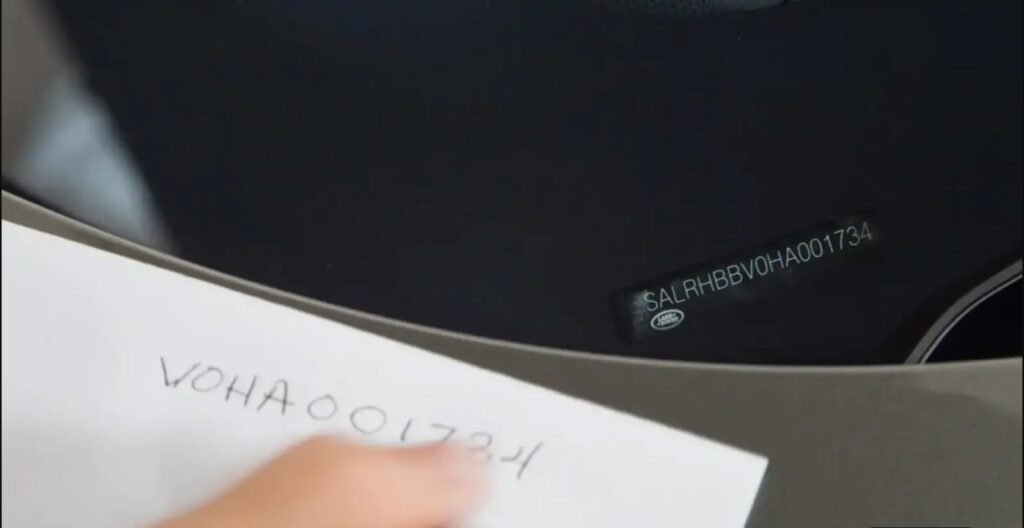Just as people have their own unique ID number, so do cars have their own VIN. You can learn a lot about your four-wheeler from this unique label made up of numbers and letters. This is especially important if you are not buying a new, but a used vehicle. Therefore, a VIN is something like the identification of your car. What exactly can a VIN number reveal to us and where can you find it? Find the answers in the following text.
What Does A VIN Number Reveal To Us?

Source: whichcar.com.au
Chassis number or VIN (vehicle identification number) is a unique 17-character identification mark that we can find on all cars manufactured after 1981. VIN carries with it a specific meaning and actually reveals to us information about the vehicle itself. How? Based on the VIN, we can fully identify the vehicle manufacturer, model, engine type, year of manufacture – and it also shows us the car serial number. The VIN itself is not just a number but consists of a mixture of 17 numbers and letters. This system was founded by the US National Highway Traffic Safety Administration, and after that, this vehicle identification system was generally accepted. All vehicles manufactured since 1980 have 17 characters. However, you can find less than a 17-character identification mark in vehicles manufactured before 1980.
Where Should We Look To Find A VIN Number
While this may not be a strict rule – the VIN can most often be found in the lower-left corner of the front windshield. In this position, VIN can be found on almost every car. When it comes to newer car models, their VINs can be found in as many as a few positions. Manufacturers have resorted to this, believing that VIN would be safer this way from possible misuse. Given that this is a unique identification of each vehicle – the VIN is placed in some more positions that are less accessible for manipulation. So today, VIN can be found in several places in the vehicle. You can find it in the lower-left corner of the front windshield, on the inner frame of the front left door, or the part of the chassis visible under the motor lid. Also, this number can be seen on the front of the engine block, as well as under the spare tire or on the inside of the rear fenders above the tire. Of course, according to their production standards, manufacturers can retain the freedom to set the chassis number at any position in the car.
Checking the VIN Number When Buying A Used Car

Source: pinterest.com
When buying a used car, we must approach this business with special care. We don’t want to buy a car that is in poor condition – and even less do we want someone to deceive us. In this regard, the VIN is extremely important because it allows us to check the car. We can find out, for example, whether the car was involved in an accident – as well as whether it was stolen and reported for search. However, we cannot find out much by mere insight into the number by ourselves. Therefore, the VIN number can be checked in the places authorized for that type of service. You can do this by checking with an authorized service or checking with an online service.
● VIN check at an authorized service center
This is a well-known method of checking a car by checking the owner’s book. At an authorized service center, you can check not only the authenticity of the VIN number – but also things like maintenance history, repairs made to the vehicle, etc.
● VIN verification using the online service
Most users claim this is the easiest and the most reliable option for checking vehicles today. According to quickppsr.com.au, online services can check the databases of stolen vehicles for which a search has been published. They also check public databases on road accidents, vehicle service databases, etc. Using the latest technologies, such online services extract information from huge databases – and present them in a simple form.
Is It Possible To Find Out The Age Of A Car Based On The VIN Number?

Source: edmunds.com
This is a question that bothers most buyers of used cars who do not want to be misled or deceived. The answer to this question cannot be strictly determined. How come? The answer lies in the differences between European and American standards in VINs. Namely, the tenth mark in the VIN number refers to the year of manufacture of the car. But, the thing is, that this is mandatory only according to the American, and not the European standard. However, we must emphasize that many European manufacturers still follow the American standard. This is primarily due to the need to export vehicles to the US market, but also the international driving. Ultimately, European carmakers reserve the right to decide whether to put the year of manufacture as the tenth sign or not.
Confusion Due To Differences In Standards
Sometimes this difference in standards can make a big mess in the minds of buyers and sellers. Namely, the buyer may think that the age of the car is older than the seller claims. However, the seller might be telling the truth. How can this be possible? There is confusion about determining the so-called Model Year. The year of the production of a particular car model is not determined in the same way as the calendar year. Therefore, it can happen that you have bought a model 2024 that was produced at the end of the previous year, that is, 2024. This can create a lot of confusion in the minds of customers.
Conclusion
We hope we have helped you understand the importance of the VIN number and its verification. When it comes to new cars that you bought in the showroom, the VIN number can serve you more as information about the current model or where it was produced. However, when buying a used car, the VIN number can be much more important, because it informs you about all repairs and accidents on the car, as well as whether the vehicle may have been stolen. However, be aware that the standards in entering the VIN may differ, and do not let this confuse you.







